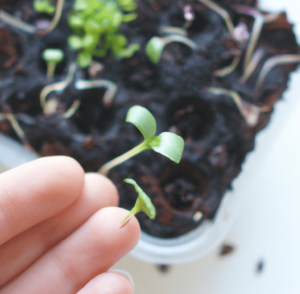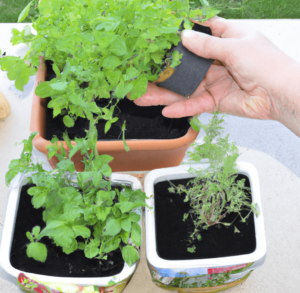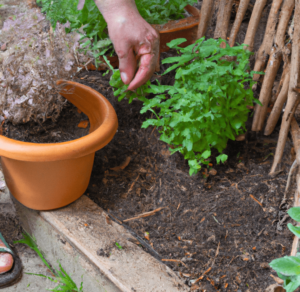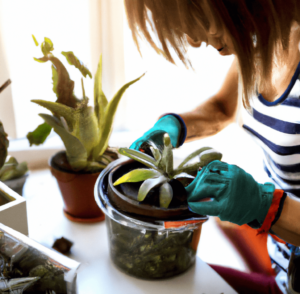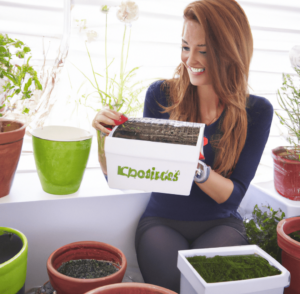Gardening is a popular hobby and pastime that has a wide appeal across genders, cultures, and ages. It offers a chance to connect with nature, cultivate a sense of pride and accomplishment, and produce fresh, healthy food. However, research has shown that gardening is often perceived as a gendered activity, with certain gender stereotypes influencing who is more likely to participate. In this article, we will explore the gender divide in gardening and consider the role that societal expectations, cultural norms, and environmental factors play in shaping this divide.
Gardening is a multifaceted activity that can take many forms, from small container gardens on a balcony to large, sprawling plots in a backyard. It can be a solo pursuit or a group activity, and it can involve a range of tasks, such as planting, watering, pruning, and harvesting. Despite its diversity, gardening has often been associated with traditional gender roles, with women being seen as the primary caregivers and nurturers of plants and men being seen as the providers and protectors of the household. These stereotypes can influence who is more likely to engage in gardening and how they approach it.
Research on the gender divide in gardening has produced mixed results. Some studies have found that women are more likely to participate in gardening than men, while others have found no significant differences between the genders. Factors that may contribute to these variations include the type of gardening being done (e.g., ornamental vs. edible), the age and cultural background of the participants, and the availability of resources and support.
One thing that is clear is that gardening can have positive effects on both the individual and the environment. For example, research has shown that gardening can improve mental health and reduce stress, as well as provide opportunities for socialization and community building. In addition, gardening can have a number of environmental benefits, such as increasing the availability of fresh, healthy food, promoting biodiversity, and reducing carbon emissions. These benefits are not limited to any one gender and can be enjoyed by anyone who engages in gardening.
In conclusion, the gender divide in gardening is a complex issue that is influenced by a range of factors, including societal expectations, cultural norms, and environmental considerations. While research on the topic has produced mixed results, it is clear that gardening can provide numerous benefits to both individuals and the environment, regardless of gender.

Statistics in Gardening and Gender Demand during Covid-19 Research
Statistics play a crucial role in understanding and analyzing data related to gardening and gender demand during the Covid-19 pandemic. For example, statistical analysis can help gardeners understand the most popular plants and techniques among different demographics, as well as the impact of the pandemic on the gardening industry. It can also help researchers study the relationship between gender and demand for gardening products and services, and how this may have changed due to the pandemic. By using statistical methods such as correlation and regression analysis, researchers can gain a deeper understanding of the factors that influence demand for gardening products and services and how they may have been affected by the Covid-19 pandemic.
Gender and Gardening
Gardening is a hobby that can be enjoyed by people of all genders. While traditional gender roles may have assigned certain tasks, such as planting and caring for flowers, to women and others, such as mowing the lawn or trimming trees, to men, there is no inherent reason why these activities should be gendered. In fact, research has shown that gardening has numerous benefits for both physical and mental health, and can be enjoyed by anyone who has an interest in plants.
Statistics show that men and women both engage in gardening at similar rates, with men slightly more likely to do so. However, there are likely to be some differences in the types of tasks that men and women choose to do in the garden. For example, men may be more likely to undertake more physically demanding tasks, such as tree pruning or heavy lifting, while women may be more likely to focus on tasks such as watering and weeding.
Regardless of gender, gardening can provide numerous benefits. It can be a relaxing and enjoyable way to spend time outdoors, and can also provide a sense of accomplishment as plants grow and thrive under one’s care. Gardening can also help to improve physical fitness and can provide an opportunity to connect with nature. Additionally, caring for plants has been shown to have a positive impact on mental health, helping to reduce stress and improve overall well-being.

Demographics
Demographics refers to the characteristics of a population, such as age, gender, income, education level, and occupation. In the context of gardening, demographics can be useful for understanding the preferences and behaviors of gardeners in a particular region or demographic group.
For example, statistics on gardener demographics may show that a higher percentage of older adults are interested in gardening, or that people with higher levels of education are more likely to participate in gardening activities. These types of insights can be useful for gardening organizations or businesses looking to target specific groups or tailor their products and services to the needs and interests of their customers.
It’s worth noting that demographics are just one factor to consider when analyzing gardening trends or patterns. Other factors, such as local climate, access to resources and space, and cultural traditions, can also play a role in shaping gardening habits and practices.
Bottom Line: Gardening Benefits to Both Individuals and the Environment, Regardless of Gender
There is no one specific gender that is more popular for gardening than the other. Gardening is a hobby enjoyed by people of all genders, and it is not uncommon to find both men and women actively engaged in gardening activities. However, research has shown that women are more likely to be the primary caregivers for plants in the home, and are therefore more likely to be responsible for the daily maintenance and care of household gardens. In contrast, men may be more likely to be involved in larger scale or commercial gardening operations. Ultimately, gardening is a gender-neutral activity that can be enjoyed by anyone regardless of their gender identity or expression.
If you’re interested in what gender is most popular for gardening, you may also be interested in the average age of gardeners and can anyone become good at gardening?


